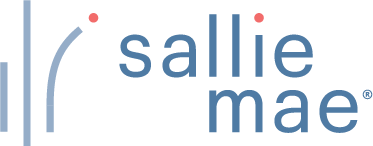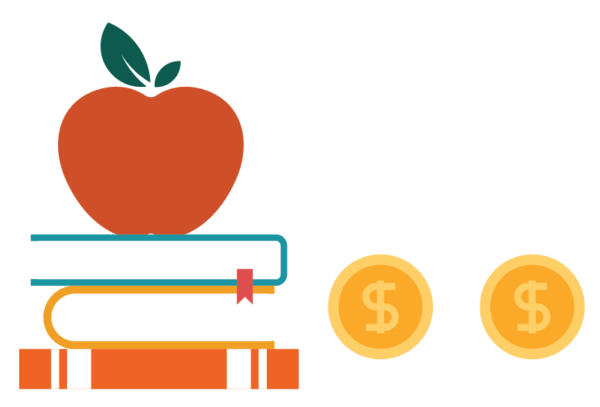Our goal is to give you the tools and confidence you need to improve your finances. Although we receive compensation from our partner lenders, whom we will always identify, all opinions are our own. Credible Operations, Inc. NMLS # 1681276, is referred to here as "Credible."
Teachers carried a median amount of $16,875 in student loan debt in 2019, according to the Center for American Progress.
So if you’re studying to be a teacher, there’s a good chance you’ll need to take out teacher student loans to pay for school.
Here’s what you need to know about teacher student loans, as well as other options:
1. Start with federal student loans
Federal student loans offer benefits and protections that could make repayment easier down the line.
For example, if you run into financial trouble or decide to join the Peace Corps after graduating, you might be able to pause your payments through the federal deferment or forbearance programs.
There are a few types of federal student loans that could fund your teacher training:
| Loan type | Who qualifies? | Interest rates | Loan limits |
|---|---|---|---|
| Direct Subsidized Loans | Undergrad students with financial need | 5.50% | $3,500 to $5,500 per year |
| Direct Unsubsidized Loans | Undergrad, graduate, and professional students | Undergrad: 5.50% Graduate and professional: 7.05% | Dependent undergrad: $5,500 to $7,500 per year ($31,000 total limit) Independent undergrad: $9,500 to $12,500 per school year ($57,500 total limit) Graduate and professional: $20,500 per year ($138,500 total limit) |
| Direct PLUS Loans | Parents, graduate students, and professional students | 8.05% | Cost of attendance minus any other financial aid received |
- Direct Subsidized Loans: These loans are available for undergraduate students with financial need. The government will cover your interest while you’re in school, so you’ll have less to pay off later. You might be able to borrow up to $23,000 in Direct Subsidized Loans over the course of your degree.
- Direct Unsubsidized Loans: Unlike subsidized loans, you’re responsible for all interest accrued on Direct Unsubsidized Loans. This means your balance will likely be higher when you graduate than when you first take them out — unless you make payments while you’re in school. These loans are available for both undergraduate and graduate students. If you’re a dependent students, you could borrow $5,500 up to $12,500 per, while independent students can borrow up to $20,500 per year.
- Grad PLUS Loans: These loans are for graduate students, and typically come with higher interest rates that subsidized and unsubsidized loans. You’ll also have to undergo a credit check. With PLUS Loans, you could borrow up to your school’s cost of attendance.
- Parent PLUS Loans: Parents who want to borrow money to pay for their child’s education can do so with Parent PLUS Loans. Like Grad PLUS Loans, you can borrow up to the cost of the school’s cost of attendance with Parent PLUS Loans. They also require a credit check.
To apply for federal student loans, you’ll need to fill out the Free Application for Federal Student Aid (FAFSA).
Afterward, you’ll receive a financial aid award letter from your school, which will explain what loans you’re eligible for. You can then choose which loans you’d like to accept.
Learn More: Federal Stafford Loans
A big advantage of federal student loans for teachers is that some could qualify for forgiveness. For example, if you work for an eligible employer and make qualifying payments for 10 years, you might qualify for Public Service Loan Forgiveness.
Or if you make your payments on an income-driven repayment plan, your loans could be forgiven after 20 to 25 years, depending on the plan.
See: Student Loan Forgiveness for Teachers
2. Research TEACH Grants
Teacher Education Assistance for College and Higher Education (TEACH) Grants could be a great option for teachers. If you meet the program requirements, you can use the grant to pay for school without ever needing to repay it.
If you’re eligible for the TEACH Grant, you could receive up to $4,000 for school. To qualify, you must complete each of the following:
- Be enrolled as an undergraduate or graduate student at a school participating in the TEACH Grant program
- Meet the academic achievement requirements
- Agree to teach in a high-need field (such as STEM) in a low-income area for at least four years within eight years of graduation
If you don’t complete your service, the grant will be turned into a Direct Unsubsidized Loan that you’ll need to repay just as if you’d taken out a federal student loan.
Check Out: Low Interest Student Loans
Other scholarships and grants for future teachers
The TEACH grant is one of the most well-known programs for future teachers — but it’s not the only option available.
Here are some other teacher-specific scholarships worth pursuing:
- American Federation of Teachers Robert G. Porter Scholars Program
- American Council of Learned Societies fellowships and grants
- American Association for the Advancement of Science Robert Noyce Teacher Scholarship Program
- Armed Forces Communications and Electronics Association Educational Foundation scholarships
3. Consider taking out private student loans
It’s usually a good idea to leave private student loans and graduate student loans as a last resort as they don’t offer the same protections as federal student loans.
But if you’ve maxed out your federal student loans, college grants, and scholarships, private student loans could help fill any financial gaps left over. Most students end up with a mix of federal and private student loans to pay for school.
Private student loans offer some advantages of their own. A couple of these include:
- Potentially lower interest rate: If you have good credit, you might qualify for a lower interest rate than you’d get with federal student loans, potentially saving you money in the long run.
- Can apply at any time: Unlike federal student loans that come with strict application deadlines, you can apply for student loans from private lenders whenever you need them. If you run out of money mid-way through your program, private student loans could be a lifesaver.
A cosigner could also help you get a lower interest rate or better repayment term, so it might be wise to have a cosigner even if you don’t technically need one.
If you decide to take out a private student loan, be sure to consider as many lenders as possible to find the right loan for you.
Credible makes this easy — you can compare your prequalified rates from our partner lenders in the table below in two minutes.
| Lender | Fixed rates from (APR) | Variable rates from (APR) | Max loan limit |
|---|---|---|---|
 | 3.79%+10 | 5.99%+10 | $400,000 |
|
|||
 | 4.24%+1 | 5.99%+ | $350,000 (depending on degree) |
|
|||
 |
3.99%+2,3
| 5.59%+2,3 | Up to 100% of school-certified cost of attendance |
|
|||
 | 4.8%+8 | 7.75%+8 | Up to 100% of school-certified cost of attendance |
|
|||
 | 5.75%+ | N/A | Up to school-certified cost of attendance (depending on school type and minus other aid received) |
|
|||
 | 4.150%9 - 15.49%9 | 5.37%9 - 15.70%9 | Up to 100% of school-certified cost of attendance |
|
|||
your credit score. 100% free! Compare Now |
|||
Lowest APRs reflect autopay, loyalty, and interest-only repayment discounts where available | Read our full methodology | 10Ascent Disclosures | 1Citizens Disclosures | 2,3College Ave Disclosures | 11Custom Choice Disclosures | 7EDvestinU Disclosures | 8INvestEd Disclosures | 9Sallie Mae Disclosures |
|||
Managing your teacher student loans
Teaching can be a very rewarding career, and you have plenty of options for employment. According to the Bureau of Labor Statistics, there are over one million high school teachers alone in the U.S. today.
Just keep in mind that while student loans might be your ticket to getting your teacher education, it’s important to remember not to overdo it. Always consider free financial aid (like scholarships and grants) first. If you need to take out student loans, make sure to borrow only what you need to keep your future payments as low as possible.
Don’t forget to check out what your estimated monthly payment could look like using our student loan calculator below.
Enter your loan information to calculate how much you could pay
With a $ loan, you will pay $ monthly and a total of $ in interest over the life of your loan. You will pay a total of $ over the life of the loan, assuming you're making full payments while in school.
Need a student loan?
Compare rates without affecting your credit score. 100% free!
Checking rates won’t affect your credit score.
Keep Reading: Student Loan Requirements




